#i can write an essay on which lines correspond with what story or character beat
Text
i hate when i have a vivid vision for a song fitting my current fixation but i'm not equipped to create it into existence
#i can write an essay on which lines correspond with what story or character beat#and i can talk about how i evision an animatic or pmv or something#can i make it though? nope#cas.txt#every time this happens to me i go “i need to practice art more so i have a baseline skill level for these kinds of things” and then i don't
3 notes
·
View notes
Text
Essay Part 2: The Deepest Relationship
Now that I have explained how Riku is a strong character with is OWN development and his OWN personanity, I can talk about his relationship with Sora. Sora is also a developed character, even if his evolution is less spectacular than Riku's. I'm not here to talk about Sora so I'll probably give you links to wonderful analysis I've read.
If I mention that, it's because I want to point at something which is very important in terms of writing. To write a relationship between two characters (or more, but here it's two), the two characters involved must be developed. That's important to understand the dynamics between them, why they like each other, why their relationship exists and why it works. And this rule applies to all kinds of relationships.
Indeed, those conditions are filled with Sora and Riku's relationship.
Actually, the producer himself admits that their relationship is the very heart of the series:
"The fact is that the main focus of the series is Sora and Riku; how their friendship develops, but also how they grow up."
Now, let's see how their relationship works. Because it works. Whether you see it as friendly or romantic doesn't matter, it works the same.

The two of them were childhood friends. It is told in BBS and KH: they used to spend all their time together, inventing stories and dreaming about adventures. They kind of promised to protect each other at the really early age of 4 and 5.
Aqua: Sora, do you like Riku?
Sora: Of course I like him, he's my best friend!
Aqua: Good. So then, if something happens, and Riku is about to get lost--or say, he starts wandering down a dark path alone--you make sure to stay with him and keep him safe. That's your job, Sora, and I'm counting on you to do it, okay?
*Sora nods*
As they grew up, a distance has settled between them. I have already talked about what caused that distance. KH is not the best moment of their friendship but, believe it or not, it is essential to its development. Both guilt and love pushed Riku to seek to make amends with Sora, to protect him:
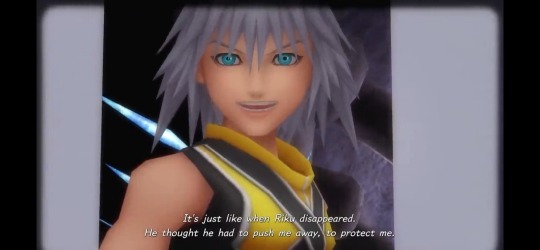
Sora, on his side, wasn't resentful against Riku at all -all he wanted was to find his friend back and make things the way they were before.
But it soon became clear to them that such a thing was impossible. Too many things had changed due to Riku's actions and the hardships they had to face. They had to stick the pieces back, and tried their best to do so. Sora tried to find back Riku during CoM and KH2.

Sora (beginning of KH2): Well, I'm gonna go look for Riku. Then he and I can go back to the islands together.
Riku tried to help Sora recover his memories and he watched his friend during his sleep.
And it didn't mattered to them that one year has passed, their goal never changed. When Sora woke up, Riku kept on protecting him, Sora kept on searching for him. Both of them wanted to recover something that mattered to them - that is to say, their best friend. Is it forced? No. It follow the events of KH. It is the consequence of what happened before.

When they finally find each other during the events of KH2, the feelings expressed by Sora (happiness, relief) and by Riku (shame, doubt) underline how much they care about each other.
Sora: Why didn't you let me know you were okay?
That's not like Sora's and Kairi's reunions, where all we can see is a promise - something that Sora and Riku also share - and mere relief, joy. I don't say Sora is not happy to be reunited with Kairi and vice-versa. It's just that when they do, the poor development Kairi is given prevents these scenes from being as powerful as Sora's and Riku's reunion(s).
Indeed, when they found each other in KH2, after a rough fight with Xemnas, what is the first thing that happens between them?

A heart-to-heart conversation.
That is sweet, and illustrates that, yes, they share a special bond. But what I like the most with this scene in the Dark Margin, is that it's the undeniable proof of what I've said before.
Those boys are trying to line the scattered pieces of their frienship up - and the way they do it is simple, touching. They are just being honest with each other while talking about their past feelings for each other - and also the one they experience in the present moment:
Riku: What I said back there...about thinking I was better at stuff than you... To tell you the truth, Sora... I was jealous of you.
Sora: What for?
Riku: I wished I could live life the way you do. Just following my heart.
Sora: Yeah, well, I've got my share of problems, too.
Riku: Like what?
Sora: Like...wanting to be like you.
Riku: Well, there is one advantage to being me... Something you could never imitate.
Sora: Really? What's that?
Riku: Having you for a friend.
Sora: Then I guess...I'm okay the way I am. I've got something you could never imitate too.
That is so sincere that I don't get why people keep on saying that their relation is forced.
Their story, however, is not over yet. Dream Drop Distance is the the highlight for the writing of their common story. I have already written a post about their bonds in KH3D, so I'll resume what I said, and add new elements. DDD is pretty smart because it depicts the link between Sora and Riku even though they're separated during almost the whole game.
At the beginning of the game, Riku and Sora are at Master Yen Sid's Tower, and he says that they have to pass the Mark of Mastery Exam. It is really important to Riku, but for Sora, it is quite useless. Still, Sora decides to pass the exam with Riku in order to motivate and support him.

Sora: But that's a formality, right? I already proved myself. Me and the king, and Riku--we can take on anything. Right, Riku?
Riku: I don't know. I think that in my heart, darkness still has a hold. Walking that path changed me. I'm not sure if I'm ready to wield a Keyblade. Maybe I do need to be tested.
Sora: Riku... Then count me in. Put me through the test! Just watch--me and Riku will pass with flying colors!
This element shows that the two of them trust each other. Which is the proof that their conversation on that dark beach has definitely recovered their bonds - their trust in each other, the fact that they can rely on each other no matter what.
That is an evolution, not just a "return to the way it was before". Because the dynamic between them has changed. Sora is the one Riku rely on. Sora is the one "in advance". Sora is the one confident and cool. (at least in Riku's eyes). But Riku is not jealous anymore. That's different.
The game has also a lot of interesting scenes. In Traverse Town, for instance, we """learn""" (in case it wasn't clear until that moment...) that Sora is Riku's most important person.
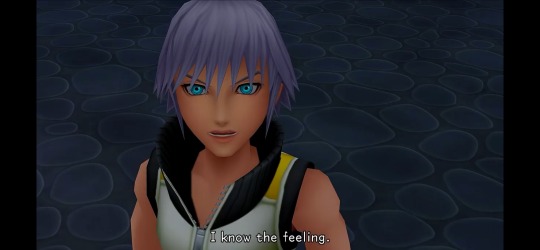
Beat: I just...wanna protect the one person who matters.
Riku: I know the feeling.
On Sora's side, by his own words, they are always together, even when they are separated:
Sora: Don't worry. He's with me--even when it might seem like he's not.
In La Cité des Cloches, the Quasimodo/Riku parallel shows that Riku his still holding back stuff inside of him.
Quasimodo: Master Frollo--he made me live inside the bell tower, but the real walls were the ones I built around my heart. You helped me see that, Riku.
Riku: I was...speaking from...personal experience.
Given the context, it is clear that it is a reference to Riku's feelings for Sora, especially if we take a look at Quasimodo's feelings for Esmeralda, and Esmeralda's and Phœbus words.
In Monstro, Riku says that Sora is his conscience, and even talks about "his stupid grin", what's.. extremely tender?!
Jiminy: You must have somebody--a friend you can talk to?
Riku: Yeah...actually, I do. That stupid grin he's always wearing--he's the best teacher I could ever have.
The Symphony Of Sorcery is also full of elements, like the fact that Sora considers that Riku is always there for him...
Sora: Don't worry. I've got a friend out there who will help. He's always picking up the slack for me.
...which was actually proved in game:

So yeah, the game does not only say that Riku is here for Sora, it actually shows that. And the fact that they share a "heart song" is purposely here to illustrate how strong their relationship is.
Mickey: It's like each of you is holding on to a little part of the other. Your hearts are always in tune, so they're free to sing.
Mickey even says that, when they're together, their heart are "free to sing". And it is true: they can be their true selves together, they know they can trust each other, they are comfortable with each other.
Riku being Sora's Dream Eater is a major point in his character but ALSO another proof that he cares really much about Sora and that it is instinctive, natural - he doesn't even realize it until someone points out this """detail""".
Another scene that, for me, is important to proove that their relationship is NOT forced is the moment when Riku is named Master. Sora is not upset, he's sincerely happy for Riku:
Sora: I knew you were gonna pass with flying colors. This is just so awesome!
Watching his reactions, it's easy to see that he knew how important it was to Riku:

And finally, KH3 is the consequence of this development. Riku and Sora have achieved a balance together, between trust in each other and independence. In this game, Sora wants to protect Riku, Riku wants to protect Sora - and he actually found the strenght to do it. Riku cheers Sora up, believes in him, the same way Sora did for him before:
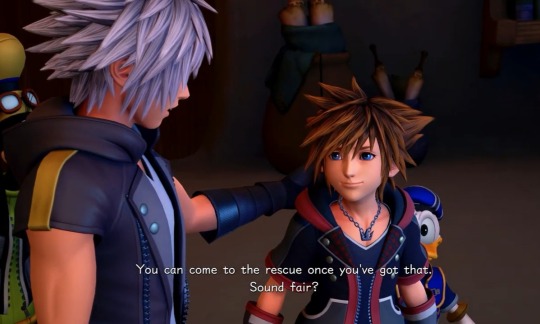
In the end, Riku is, once again, the one who's saving Sora. In fact, I would say they constantly save each other - sometimes save and being saved is the same thing.
So, yeah, I don't know if it was clear... but what I meant is that every single KH game where those boys are present - that is to say the large majority of them - shows how they both evolve individualy but also how their relationship evolves to become something better, something greater. The way it is written follows a perfect logic, a dynamic that corresponds to the state of the two characters and the context in which the action takes place.
Once again, regarding the care that is taken to tell their story, it is unfair to say that their relationship is forced. ESPECIALLY if it is compared to Sora's relation to Kairi. It is simply incomparable.
Intro • Part 1
#kh#kingdom hearts#sora#riku#soriku#sora and riku#sora x riku#riku x sora#soriku analysis#first essay#my essay#kingdom hearts essay#kh analysis#kingdom hearts analysis#kh sora#riku kh#kh riku#sora kh#kingdom hearts sora#riku kingdom hearts#kingdom hearts riku#sora kingdom hearts#ship analysis#square enix#disney#writing#my thoughts#thoughts#my writing
133 notes
·
View notes
Text
37 Books Every Gentleman Should Read
World Book Day is tomorrow as it is every 23 April. Commit yourself to reach back to the classics, then begin reading. Some book titles included in this list are expected, though there are a handful of surprises. And, if you're thinking what to read during a general free time on the sofa, or by a pool or an ocean, I've got you covered.
A well-read gentleman is also a good conversationalist. It's the perfect excuse to get lost in a good book.
Self-Control: Its Kingship and Majesty by William George Jordan
The turn of the 20th century was the golden age of personal development books. In contrast to the self-help books of today, which are filled with flattering, empty, cliche platitudes, they’re direct, masterfully written, and full of profound and challenging insights that centre on the development of good character. Even in this golden age, one author stands supreme: William George Jordan. His Self-Control is full of beautifully written wisdom on self-reliance, calmness, gratitude, and more.

How to Be A Gentleman: A Timely Guide to Timeless Manners by John Bridges
Being a gentleman isn’t just being a nice guy, or a considerate guy or the type of guy someone might take home to meet their mother. A gentleman realizes that he has the unique opportunity to distinguish himself from the rest of the crowd. He knows when an email is appropriate, and when nothing less than a handwritten note will do. He knows how to dress on the golf course, in church, and at a party. He knows how to breeze through an airport without the slightest fumble of his carry-on or boarding pass. And those conversational icebreakers―“Where do I know you from?” A gentleman knows better. Gentlemanliness is all in the details, and John Bridges is reclaiming the idea that men―gentlemen―can be extraordinary in every facet of their lives.

A Confederacy of Dunces by John Kennedy Toole
A Confederacy of Dunces is one of my favourite books of all time. This New Orleans-based novel won author John Kennedy Toole the Pulitzer Prize. Its perfect comedy of errors is centred around the character of Ignatius J. Reilly, a lazy and socially ignorant, but very intelligent man, who still lives with his mother at the age of 30. A Confederacy of Dunces serves as a guide for what a man ought not to be while providing sound entertainment all the while.

Lord of the Barnyard: Killing the Fatted Calf and Arming the Aware in the Cornbelt by Tristan Egolf
A literary sensation published to outstanding accolades in America and around the world, Lord of the Barnyard was one of the most auspicious fiction debuts of recent years. Now available in paperback, Tristan Egolf's manic, inventive, and painfully funny debut novel is the story of a town's dirty laundry -- and a garbagemen's strike that lets it all hang out. Lord of the Barnyard begins with the death of a woolly mammoth in the last Ice Age and concludes with a greased-pig chase at a funeral in the modern-day Midwest. In the interim there are two hydroelectric dam disasters, fourteen tavern brawls, one shoot-out in the hills, three cases of probable arson, a riot in the town hall, and a lone tornado, as well as appearances by a coven of Methodist crones, an encampment of Appalachian crop thieves, six renegade coal-truck operators, an outraged mob of factory rats, a dysfunctional poultry plant, and one autodidact goat-roping farm boy by the name of John Kaltenbrunner. Lord of the Barnyard is a brilliantly comic tapestry of a Middle America still populated by river rats and assembly-line poultry killers, measuring into shot glasses the fruits of years of quiet desperation on the factory floor. Unforgettable and linguistically dizzying, it goes much farther than postal.

Treasure Island by Robert Louis Stevenson
I saw the theatre production of Treasure Island at the National Theatre not once, not twice, but three times. Then, I read the book again with much delight. Pretty much everything we think of when we think of pirates comes not from the pages of history but from this book: treasure maps with “X” marking the spot, deserted islands, peg legs, parrots, and more. Published as a children’s tale (and a rather adult one at that), American novelist Henry James praised it as “perfect as a well-played boy’s game.”
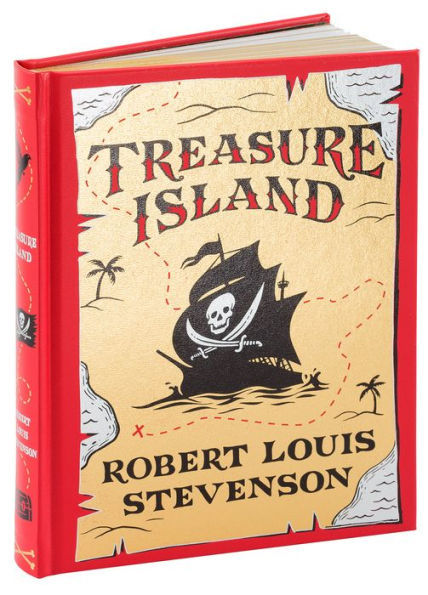
The Federalist Papers by Alexander Hamilton
Read Hamilton's Federalist Papers, then read the Constitution. Composed of 85 articles, The Federalist Papers served to explain and encourage the ratification of the U.S. Constitution. The majority of the essays were penned by Alexander Hamilton and originally published in The Independent Journal and The New York Packet. While the Constitution lays out the laws of the land, these essays provide the 18th-century version of the ballot/blue books we get the mail around election time, explaining the laws that are being proposed. It is essential reading for any civically minded American. Forget the theatre production.
Your Car’s Owner’s Manual
Yep, that dusty book in your glove compartment. Come on, bring it out and get to know your car better. So, it’s not exactly “literature” but it’ll teach you something that will come in handy. Guaranteed. By the way, I was shocked to learn the battery in my Mercedes is located under the driver's seat.
The Wealth of Nations by Adam Smith
The fundamental work on free-market policies: “It is not from the benevolence of the butcher, the brewer or the baker, that we expect our dinner, but from their regard to their own self-interest. We address ourselves, not to their humanity but to their self-love, and never talk to them of our own necessities but of their advantages.” Want an education in economics? This book is a great start.

How to Win Friends and Influence People by Dale Carnegie
The granddad of books about people skills, the advice found in How to Win Friends and Influence People is still sound and applicable 80 years later. Carnegie writes about skills like making people feel valued and appreciated, ensuring you don’t come across as manipulative (which happens unintentionally more than we think!), and essentially, “winning” people to your viewpoints and ideas. While it can sound a little disingenuous in its description, these are true skills that people use every day, and this book is a great resource for boning up your social game.

The Republic by Plato
The Republic is a Socratic dialogue, written by Plato around 380 BC, concerning the definition of justice and how a just city-state should be ordered and characterized. It is the great philosopher’s best-known work and has proven to be one of history’s most influential works of philosophy and political theory. In it, Socrates and other various interlocutors discuss the meaning of justice and examine whether or not the just man is happier than the unjust man, as well as the theory of Forms, the immortality of the soul, and the role of the philosopher in society.
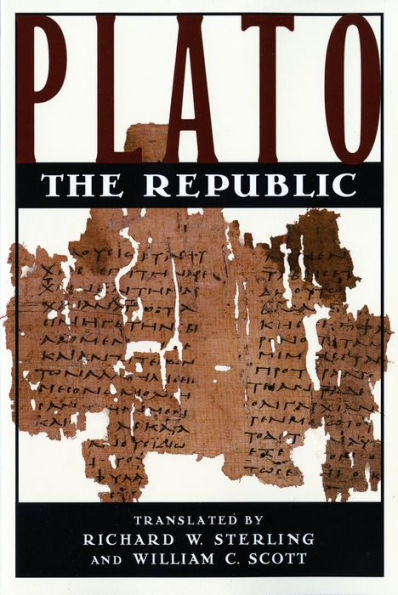
For Whom the Bell Tolls by Ernest Hemingway
Robert Jordan is a young dynamiter in the Spanish Civil War. He’s an American who’s volunteered to fight against Franco’s fascists and is sent behind enemy lines to take out an important bridge to impede enemy forces from advancing. He lives in a rudimentary camp with anti-fascist Spanish guerillas and comes to embrace their hearty way of life and love. And of course, there are some incredible battle scenes, which were informed by Hemingway’s own time as a correspondent in the Spanish Civil War.
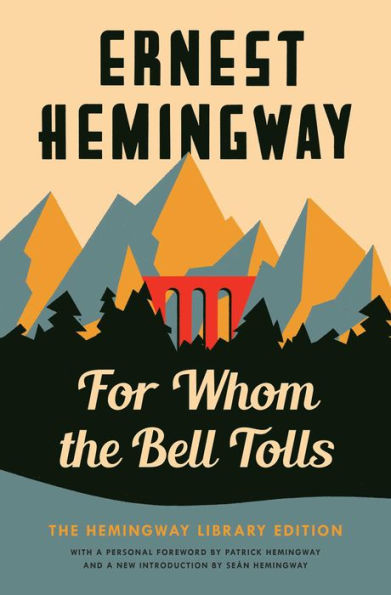
On the Road by Jack Kerouac
A defining novel of the Beat generation, On the Road, is fictional, but a semi-autobiographical account of two friends’ road trips across America, against the backdrop of a counter-culture of jazz, poetry, drug use, and the drunken revelry of back-alley bars. Along with their travels, they’re searching for what many young men are: freedom, ambition, hope, and authenticity.

Travels With Charley In Search of America by John Steinbeck
To hear the speech of the real America, to smell the grass and the trees, to see the colours and the light—these were John Steinbeck's goals as he set out, at the age of fifty-eight, to rediscover the country he had been writing about for so many years. With Charley, his French poodle, Steinbeck drives the interstates and the country roads, dines with truckers, encounters bears at Yellowstone and old friends in San Francisco. Along the way, he reflects on the American character, racial hostility, the particular form of American loneliness he finds almost everywhere, and the unexpected kindness of strangers.

A Moveable Feast by Ernest Hemingway
Ernest Hemingway’s classic memoir of Paris in the 1920s. A Moveable Feast brilliantly evokes the exuberant mood of Paris after World War I and the unbridled creativity and unquenchable enthusiasm that Hemingway himself epitomized.

Swiss Family Robinson by Johann David Wyss
After a terrible storm, the Swiss family Robinson becomes shipwrecked on a deserted island. With teamwork, ingenuity, and a bit of luck, the group strives to overcome nature’s obstacles and create some semblance of community and civility within their new environs. A truly classic survival and adventure tale.

Atlas Shrugged by Ayn Rand
While there’s plenty of political, moral, and economic philosophy in this book, it’s coated in an action thriller of a story. Set in the near future, our protagonists are Dagny Taggart, heir to a transcontinental railroad empire, and Hank Rearden, the head of a steel company who’s invented a revolutionary new alloy. Together, they battle against evil government bureaucrats and socialists to hold civilization together, while all the while powerful industrialists are mysteriously disappearing, leaving behind only the cryptic phrase “Who is John Galt?” Though this book is associated with passionate libertarianism, the story is an interesting one to ponder no matter one’s political persuasions.

The Count of Monte Cristo by Alexander Dumas
The ultimate tale of betrayal and revenge. Edmund Dantes, days before marrying his beloved Mercedes, is brutally betrayed, arrested for treason, and consequently taken to a prison on an island off the French coast. The story goes on to tell of his escape from prison (don’t worry, it’s early in the novel and doesn’t ruin anything) and his becoming wealthy and re-entering society as an educated and sophisticated Count. He plots his revenge, eyes reclaiming his love, and ultimately…well, you’ll just have to read it.
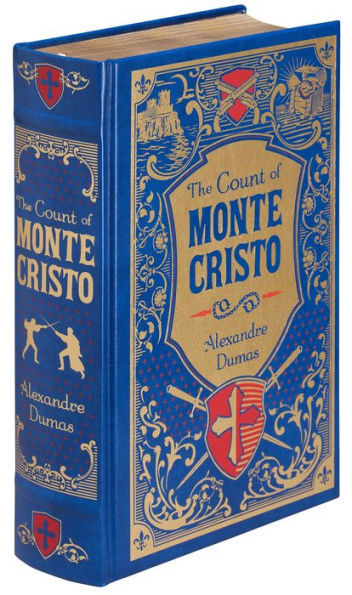
Self-Reliance & Other Essays by Ralph Waldo Emerson
“Self-Reliance” contains the most prominent of Ralph Waldo Emerson’s philosophies: the need for each individual to avoid conformity and personal inconsistencies, and to follow their own instincts and ideas. You’re to rely on your own self versus going with the ebbs and flows of culture at large. Other essays in the collection focus on friendship, history, experience, and more. Is it just me, or is this Self Reliance a necessity in today's world? I'm anything except a conformist.

The Master and Margarita by Mikhail Bulgakov
There is nothing more manly than a bout with the Devil. Mikhail Bulgakov wrote this entertaining commentary on the social bureaucracy in Moscow during the height of Stalin’s reign. Lucifer himself pays the atheistic city a visit to make light of the people’s scepticism regarding the spiritual realm. The novel also visits ancient Jerusalem under Pontius Pilate’s rule. Even for the non-religious, this book will provide plenty of food for thought.

Cyrano de Bergerac by Edmond Rostand
This 1897 play follows French cadet Cyrano de Bergerac. He’s a poet, musician, and expert swordsman — a true Renaissance Man. Unfortunately, Cyrano has a tragically large nose, which hinders his confidence to the point that he’s unable to profess his feelings to Roxane and feels he isn’t worthy of anyone’s love. What is a man to do in such a situation? Read and find out.

Don Quixote by Miguel de Cervantes
It’s all well and good to be a dreamer, but a man must also be grounded in reality. It’s a lesson that Don Quixote comes to learn in the 17th-century eponymous book, which is widely considered to be the world’s first novel. Quixote, along with his squire Sancho Panza, travels the world in search of grand adventures and heroic deeds which would earn him the title of Knight. He continues against all odds, and in some cases, against all common sense. It’s funny, surprisingly easy to read given the fact that it’s over 400 years old, and can provide a man many lessons on the aspirations of heroism.
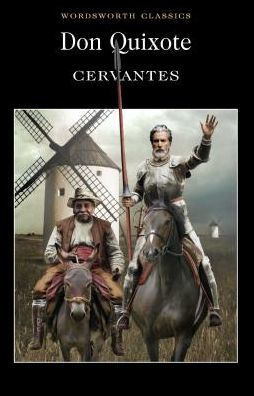
Frankenstein by Mary Shelley
This short, but ever-popular tale is a young woman’s take on humanity and horror. Mary Shelley was just 21 when Frankenstein was first published in 1818, and the book is widely regarded as the first popular science fiction/horror novel. While you surely know the monster and the story of mad scientist Victor Frankenstein bringing him to life, it’s a much darker and more philosophical book than what pop culture has made it out to be. You learn about science, ego, pride, and ultimately, what it means to be human.

A Tale of Two Cities by Charles Dickens
Dickens should be a part of every man’s reading life, and A Tale of Two Cities is a good starter. It’s set in London and Paris during the French Revolution and depicts the plight of the French peasantry, their turn to violence towards the aristocrats who marginalized them, and the parallels to London society during the same period.
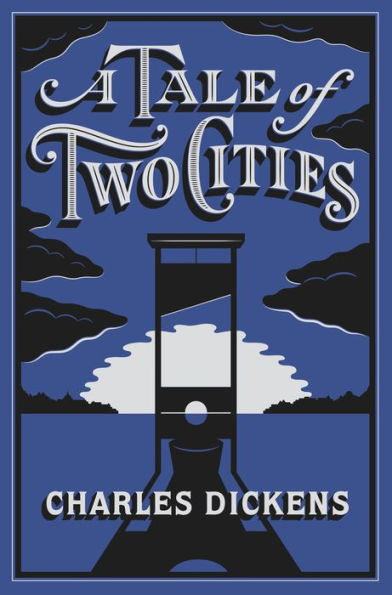
The Great Railway Bazaar by Paul Theroux
In this travelogue, Paul Theroux recounts his 4-month journey through Europe, the Middle East, India, and Southeast Asia on the continent’s fabled trains: the Orient Express, the Golden Arrow to Kuala Lumpur, the Mandalay Express and the Trans-Siberian Express. His well-documented and entertaining adventures have come to be considered a classic in the travel literature genre. This journal satisfies the vicarious traveller and inspires the adventurous man.
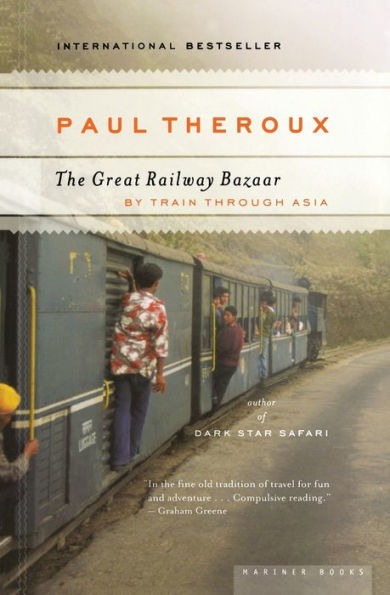
The Iliad & The Odyssey by Homer
These epic poems are some of the world’s oldest pieces of literature. They’ve been read, enjoyed, and studied for thousands of years, and for good reason. They are not only beautiful to the ear, but contain lessons that every man can learn about heroism, courage, and manliness. The Iliad takes place during a few weeks of the final year of the Trojan War and details the heroic deeds of both Achilles and Hector, as well as a variety of other legends and stories. The Odyssey, a sequel of sorts, is about the great warrior Odysseus’ voyage home after the Trojan War. He faces various obstacles in his return to Greece, and we also see how his family back home dealt with his assumed death.

The Sun Also Rises by Ernest Hemingway
The novel that catapulted Hemingway to worldwide fame and success. The Sun Also Rises follows Jake Barnes and a group of ex-patriot friends through Spain and France, with plenty of wine-drinking and bull-fighting. The novel is a bit semi-autobiographical in that the main character is trying to deal with his war wounds — both physical and emotional — and escape to the supposed romanticism of travelling and eating and drinking to your heart’s content. Does Jake find happiness? You’ll have to read to find out.
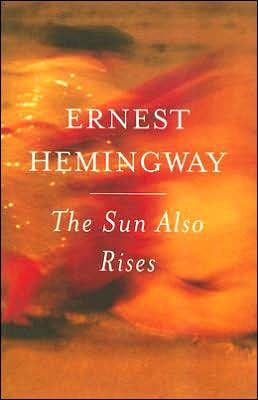
The Brothers Karamazov by Fyodor Dostoevsky
While the book’s plot centres on an ageing, disinterested father and his three adult children, the substance found within goes much beyond that. Dostoevsky’s final and greatest novel, this book also involves spiritual and moral dramas and debates regarding God, free will, ethics, morality, judgment, doubt, reason, and more. It’s a philosophical work clothed as a novel — which of course makes Dostoevsky’s weighty ideas easier to digest. The McDuff translation gets rave reviews.

The Prince by Niccolo Machiavelli
Written in the early 1500s, this is the classic guide on how to acquire and maintain political power (even if those methods are sometimes unsavoury) — a so-called “primer for princes.” Its precepts are direct, if not disturbingly cold in their formulaic pragmatism. It asks the classic question: “Do the ends justify the means?” A worthy read for any man wishing to better understand the motivations and actions that tend to rule modern politics.

The Great Gatsby by F. Scott Fitzgerald
Set among New York City elites in the roaring ‘20s, this book is considered one of America’s great literary products for a reason. Narrator Nick Carraway is befriended by his mysterious millionaire neighbour, Jay Gatsby, and proves to be a crucial link in Jay’s quixotic obsession with Nick’s cousin, Daisy. The metaphors, the beautiful writing, and the lessons one can garner about reliving the past all make The Great Gatsby worth reading, again and again. Our interview with NPR’s Maureen Corrigan is worth a listen. She is the author of So We Read On: How To Great Gatsby Came To Be and Why It Endures. We discussed her research into why a novel was written about Jazz Age New York that resonates with Americans nearly a century later.

1984 – George Orwell
Read 1984, then go delete your Facebook account. Perhaps the most essential to re-read today, 1984 sets stage in an oppressive futuristic society monitored by the ever-watching Big Brother. Protagonist Winston Smith goes to work every day at the Ministry of Truth, where he rewrites and distorts history. However, Smith decided to begin a diary — an action punishable by death. Amid modern-day data mining, the fall of Net Neutrality, and lunatic leaders, we cannot forget the toll of tyranny and totalitarianism.

Of Mice and Men – John Steinbeck
Another assigned high school read you probably didn’t appreciate when you were sixteen, it’s time to revisit the ambling of George Milton and Lennie Small, migrant workers who search for jobs throughout California amid The Great Depression. And with all great novels, it’s been banned time and again for its mention of violence, swearing, racism, sexism, the works, but it’s an essential commentary on the nature of The American Dream, the dichotomy of strength and weakness, and the loneliness of isolation.

The Adventures of Huckleberry Finn – Mark Twain
Often called “the greatest American novel,” The Adventures of Huckleberry Finn proceeds Twain’s The Adventures of Tom Sawyer and is renowned for its use of written vernacular in imitation of southern antebellum society. The story follows teenager Huck Finn and his friend Tom Sawyer as they navigate themes of race and identity. So, yeah, you should re-read that one today, especially given that the original novel has been the subject of censorship in schools for years.
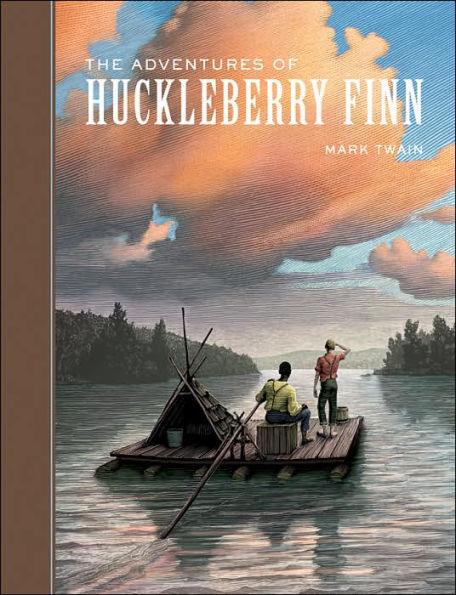
The Poetry of Pablo Neruda
If you need an “excuse” to read some of the best love poems ever written about oceans and women and the earth, say you’re brushing up on your dating one-liners. But the words by Chilean poet, diplomat, and politician Pablo Neruda are so much more than kindling. They are pure fire and combustion. This book will wake up your soul. It also mends broken hearts.

The Stranger – Albert Camus
An ordinary man finds himself on trial after committing a murder in one of the greatest novellas of the 20th century. A dissection of morality and the philosophy of the absurd, The Stranger is particularly relevant today as we face a world of heightened sensitivity and, perhaps, a society that makes no sense to us.

The Call of the Wild – Jack London
Try this: Take the novel on a long, boring, or otherwise dreaded journey. Close the last page a changed man (it’s that phenomenal) with a new outlook on struggle and bonds. Set in Yukon, Canada, during the 1890s Klondike Gold Rush, London writes of Buck, a dog that is abducted and forced into the chaos and brutality of frontier life. In a word: rugged. Secretly: a tear-jerker.
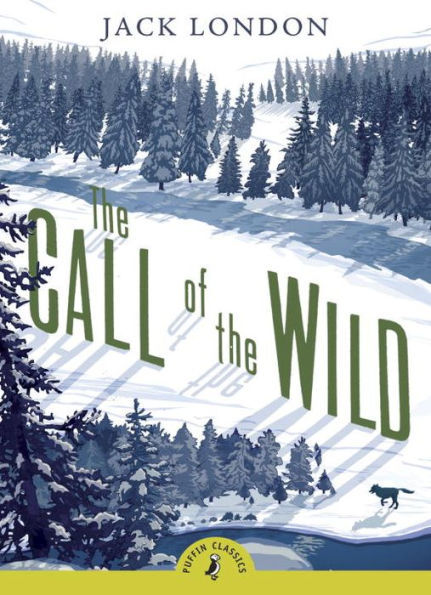
Lord of the Flies – William Golding
A band of British boys are shipwrecked on an island and try to maintain order and normalcy the way governments do. As you might guess, it all goes terribly, terribly wrong. Lord of the Flies, the first novel from Golding, is a perfect glimpse at the nature of savage inclination. It’s a short read but it’s a damn good one.

Catcher In The Rye - J.D. Salinger
We’ll bet you first glimpsed the vibrant red cover of Catcher in the Rye some time in high school. But don’t let your memory fool you into thinking it’s a kids book. Possibly the best coming-of-age tale in all of literature, Salinger writes of the young and relatable protagonist Holden Caulfield and his first-person commentary on the world as he struggles between embracing adulthood and hiding in his childhood memories.

How To Be A Gentleman
Read the full article
0 notes
Link
By Grant Faulkner
Grant Faulkner likes big stories and small stories. He lives in the Bay Area and is the executive director of National Novel Writing Month and the cofounder of 100 Word Story. His stories have appeared in dozens of literary magazines, including the Southwest Review, Green Mountains Review, and PANK. His essays on creativity have been published in the New York Times, Poets & Writers Magazine, Writer’s Digest, and the Writer. He recently published a collection of one hundred 100-word stories, Fissures (Press 53, 2015), two of which are included in The Best Small Fictions 2016 (Queens Ferry Press, 2016). His book of essays on creativity, Pep Talks for Writers: 52 Insights and Prompts to Boost Your Creative Mojo, is forthcoming from Chronicle Books in the fall of 2017.
When I first came to San Francisco as a young English major during my spring break in 1987, I knew nothing of the Bay Area’s literary history. I didn’t know that the young bootstrapping Jack London had determinedly chiseled himself into a writer in nearby Oakland, or that Allen Ginsberg’s famous “Howl” reading had riled the literary world (and its censors) in San Francisco in the 1950s. I hadn’t yet read Dashiell Hammett’s noir novels, nor Eldridge Cleaver’s Soul on Ice (Ramparts Press, 1968), nor Armistead Maupin’s Tales of the City (Harper & Row, 1978). And I had no idea that Gertrude Stein had said, “There’s no there there,” about Oakland (if only she could see the “there there” now).
I didn’t know that so many writers had lived out their insurrectionary impulses and beliefs in San Francisco—that for many authors the Bay Area served as a place of refuge, escape, and even salvation from the rest of America.
I had only one thing on my list. A friend told me that if I did just one thing in San Francisco, I had to go to City Lights (261 Columbus Avenue), a bookstore and publishing house owned by the doyen of the Beats, Lawrence Ferlinghetti.
I’d never be quite the same again. When I walked through the doorway, I didn’t just see rows of bookshelves; I felt drawn in, seduced, by the exotic call of the ideas and stories that seemed as if they were part of the air itself. The wooden floors were creaky and uneven, each room a mysterious cavern, a haven. I picked up books published by presses I’d never heard of, books that felt alluring and dangerous, as if they’d prick me with new thoughts. I greedily bought as many as I could afford, and then went to Vesuvio Cafe, the bar across the alley from City Lights where the Beats themselves had thrashed through ideas over too many drinks, and I immersed myself in the lawless careening of their words, enthralled by an edgy, searching, incandescent expression I didn’t know was possible.
Thus began my love affair with the roguish spirit of the Bay Area and its literary tribes of misfits, dropouts, and seekers. If you haven’t been to San Francisco, ban the popular notion of it as a bastion of tie-dyed hippies with streets full of cute cable cars and postcard views of the Golden Gate Bridge. It’s much more than that. It’s a place spawned by the raucous boom-and-bust spirit of the Gold Rush, a place where people have always exuberantly and recklessly searched for different kinds of fortunes. It’s a city that disregards the need for stability, resting precariously on a restless fault line, inviting gate crashers who strive to push the limits of being and shake up all forms poetry and prosody.
“It's an odd thing, but anyone who disappears is said to be seen in San Francisco,” said Oscar Wilde. It’s a city for those who feel “other,” who feel lost, and then find themselves in the Bay Area.
Literature Born in the Streets
Silicon Valley has moved into San Francisco in many ways—“invaded” or “encroached,” some might say, driving up rents and driving out bohemians—but the rollicking energy of former days is alive and well in literary festivals like Litquake, an annual orgy of readings and discussions that sends literary tremors throughout the city for nine days each October. Events take place in unlikely spaces—chapels, bars, and hair salons—and everything culminates in a bacchanalia called Lit Crawl, a pub crawl of readings that wends through the teeming streets of the Mission District on the final Saturday night.
What’s nice about Litquake is that while it includes a healthy lineup of big-name authors, its fundamentally a celebration of local authors and the maverick spirit of the city. Founded in 1999 by San Francisco writers Jack Boulware and Jane Ganahl, Litquake is now the largest independent literary festival on the West Coast, and it’s grown to Austin, Seattle, New York City, Iowa City, Los Angeles, Portland, London, and Helsinki.
Similarly, Oakland has spawned the Oakland Book Festival, a festival that captures the unique character of the quickly evolving East Bay, which has in some ways become the Bay Area’s version of Brooklyn, a haven for artists priced out of San Francisco. It’s not a festival designed around book tours, as many festivals can be, but serves as an exploration of ideas on topics related to Oakland’s past, present, and future, with the goal of encouraging debate. Each year’s festival, which takes place in Oakland’s City Hall in May, has a different theme. This year’s theme is “Equality and Inequality,” following “Labor” and “Cities.”
The Bay Area offers so many literary events and festivals that I can’t list them all. Beast Crawl, a version of Lit Crawl for the East Bay, takes over Uptown Oakland for one night every July with more than one hundred and fifty writers who have roots in the East Bay. The San Francisco Writers Conference brings together best-selling authors, literary agents, editors, and publishers from major publishing houses every President’s Day weekend to help emerging writers launch their professional writing career. And then the Bay Area Book Festival, now in its third year, features notable authors from across the country for a two-day festival in early June in downtown Berkeley. Of note, each year the festival constructs Lacuna, an outdoor library that is assembled with fifty thousand books, all available to take for free, and always empty by the end.
Redefining Readings
You might say the Bay Area itself is an ongoing literary festival, though. Bookstores are crowded with authors on book tours, and there’s a farrago of ongoing series that break the boundaries of conventional readings and invoke a communal spirit that transcends them.
Quiet Lightning, a submission-based reading series, has produced more than a hundred shows over the last seven years—in locations as varied as night clubs, a greenhouse, a mansion, a sporting goods store, and a cave. The series is named Quiet Lightning because it aspires to create “that feeling of what was in the room when someone has stopped talking, but everyone has been listening and paying close attention,” says Evan Karp, founder of the series. Quiet Lightning readings are always bursting with people, yet exist in a hush of focused attention. One person reads, and then the next, with no banter or introductions in between, creating a focus on just the work itself and a feeling that the entire evening is an experience of a single continuous piece of art. Of special note, Quiet Lightning publishes a corresponding book of writings from each show.
Other reading series are less quiet, but pack their own definition of lightning. Porchlight, a monthly storytelling series that takes place at the fabulous Verdi Club (2424 Mariposa Street), features six people telling ten-minute stories without using notes. Like Quiet Lightning, cofounders Beth Lisick and Arline Klatte don’t invite just famous storytellers, but strive to create a space for the voices of all sorts of characters of the city. Storytellers have included school bus drivers, mushroom hunters, politicians, socialites, sex workers, social workers, and even me.
Then there’s the ribald, bawdy Shipwreck, which is billed as “San Francisco’s premier literary erotic fanfiction event,” and takes place on the first Thursday of every month in the Booksmith (1644 Haight Street), one of San Francisco’s best bookstores. Shipwreck thumbs its nose at the sanctimony of conventional literary events by “destroying” classic works. A few weeks before each event, six local authors are selected and assigned to write an erotic story from the point of view of a character from a classic novel. Their pieces are then read aloud to the audience while the authors watch from the stage, trying to show no signs of which piece is theirs before voting begins. In December, Victor Hugo's Les Misérables was erotically plumbed, and this January, Laura Ingalls Wilder's The Little House on the Prairie will be undressed.
Writers With Drinks is a monthly literary variety show with a raucous cross-genre approach held each month at the Make Out Room (3225 22nd Street) in the Mission, which hosts many literary events. Writers With Drinks features six readers from six different genres, but the show isn’t just about readings—it’s one part stand-up comedy, one part erotica, one part rant, and one part something else. I go just to hear the hilarious host, Charlie Jane Anders, spin fictitious biographies of the authors. And then there’s plenty of drinking, of course.
I sometimes sneak out of work for the Lunch Poems series that former U.S. poet laureate Robert Hass started at the University of California in Berkeley’s sumptuous Morrison Library (101 Doe Library). When I first heard that the Mechanics’ Institute Library (57 Post Street) was a private library, I imagined it as an elite bibliophile’s country club, but it’s anything but that. It hosts a diverse range of cultural events including author readings and conversations, the CinemaLit Film Series, and the oldest continuously operating chess club in the United States (its plump leather chairs are also perfect for afternoon naps, as I learned when I worked nearby). The San Francisco Poetry Center (1600 Holloway Avenue) was founded in 1954 with a small donation by W. H. Auden, and it now puts on thirty public readings, performances, and lectures each year on the San Francisco State University campus and at various off-campus venues. If you can’t go to a reading, dive into its American Poetry Archives, a collection of five thousand hours of original audio and video recordings documenting its reading series.
Other engaging series include Why There Are Words, a monthly reading series put on by Peg Alford Pursell that fills the Studio 333 gallery in Sausalito every second Thursday. And then I’d be remiss if I didn’t mention the series I cohost with Jane Ciabatarri, Kirstin Chen, and Meg Pokrass, the Flash Fiction Collective series, which showcases writers in San Francisco’s bustling flash fiction scene at the funky Alley Cat Books (3036 24th Street). Many call San Francisco the hub of flash fiction because so many writers in the Bay Area have found a literary home in the shorter side of stories.
[Excerpt — click on the title link to read all three pages of Grant Faulkner’s excellent CITY GUIDE to the San Francisco Bay Area literary scene.]
***
We’re glad that the U.S. economy has significantly improved in the past few years, and that “new Silicon Valleys,” or place-specific innovation centers, are growing all over the world, at least in terms of innovation and the development of creative economy ecosystems — and we would love to visit them all! We all learn best by exchanging ideas across cultures and industries. We fully support complete diversity in the workplace, and overcoming the inequality challenges that are still too prevalent in our world.
Now, entrepreneurs, intrapreneurs, and organizational leaders from other cities and countries who are visiting the San Francisco Bay Area can have access to Silicon Valley companies to learn from their cultures, hiring, leadership and innovation methods. Come join us for a dynamic, unforgettable, and very enjoyable Innovation Tour in San Francisco, Silicon Valley, the East Bay, in the Wine Country, or on the beautiful, rural, Northern California seacoast in Mendocino County, including Fort Bragg, California, where recently, we’ve been working on business and tourism projects.
At Creative Sage™, we design high impact, customized creativity, innovation, and leadership programs, and we are now offering related tours, events and workshops in wonderful urban and rural settings that will spark your imagination — and your team’s — to come up with brilliant ideas and plan how to implement new innovations in services, products, your organization’s business model, operations, or in any other area.
We use the latest in value-tested creativity and innovation techniques and processes; and we select world-class facilitators and partners to help your organization gain lasting value from your experience working — and playing — with us. Creativity and innovation processes could include design thinking, business model canvas, arts-based, interactive creativity activities, lateral thinking, gamification, or other proven methods.
We also work on workplace culture issues, leadership challenges, handling transitions, and building resilience in organizations and individual clients. You’ll be able to see first-hand how Silicon Valley companies create a culture of creativity and innovation, and you’ll be able to talk with their leaders. We’ll arrange a customized tour for you that addresses your organization’s issues.
We can design additional customized programs and tours for individuals, families, work teams, university students and faculty, including those in undergraduate or graduate entrepreneurship or MBA programs, and other special interest groups, such as the charitable tourism activities.
Join our email list and visit our web site, or call: (510) 845-5510 for more information.
You’ll take away essential, valuable insights that you could not achieve in any other way, while enjoying the experience of a lifetime!
***
0 notes